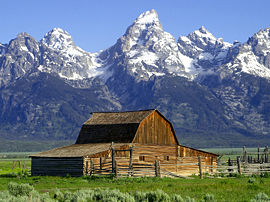"I believe the anthropogenic effect for climate change is still only one of the hypotheses to explain the variability of climate." -Kanya Kusano
Climate Controls:
Climate Controls:
Jackson is greatly impacted by both meso and micro-scale controls. The meso-scale controls, specifically the huge orographic barrier of the surrounding Rocky Mountains, secondary atmospheric circulation patterns and dominating air masses play a major role in shaping the regions climate. The migration of atmospheric circulation patterns (seasonal trend) in which the polar jet and cold polar fronts create huge areas of air mass exchange along the surface along with strong high-low pressure gradients create the high winds persistent in the region. Further local or micro-scale controls contribute to a so-called microclimate where cold air drainage or ponding takes place in the valleys (where Jackson ‘Hole’ gets its name), causing Jackson to receive much more precipitation-usually in the form of snow on average than the rest of Wyoming.
1950-2011 Average Temperatures and trend line in Jackson, WY:


